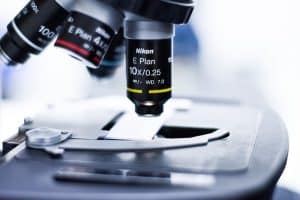Understanding the science behind drug testing methods

Image by fernando zhiminaicela from Pixabay
Drug testing plays a vital role in numerous industries, from healthcare and criminal justice to athletics and workplace compliance. As substance use becomes more complex and new synthetic drugs emerge, drug testing technology has advanced rapidly to meet growing needs for speed, accuracy, and reliability.
To appreciate how results are generated and what makes one method more suitable than another, it’s important to understand the scientific principles behind modern drug testing. Whether for routine employment screening or medical monitoring, these methods are grounded in biochemistry, immunology, and analytical chemistry.
Why drug testing exists and how it’s used
Drug testing isn’t solely about enforcement, it’s a tool for promoting safety, fairness, and health. Employers use it to ensure workplace productivity and reduce accidents. Physicians use it to monitor patient compliance and prevent drug interactions. Law enforcement agencies depend on accurate testing to support investigations and court proceedings.
Regulations vary by context, but the goal remains consistent: detect substances quickly and reliably while minimizing false positives and negatives. Testing methods must balance invasiveness, cost, and detection window with scientific rigor and defensibility. From Lynk Diagnostics Toxicology Testing to other high-performance laboratory services, modern tools have greatly improved how we identify drug compounds in biological specimens. This evolution allows for earlier detection, broader panels, and better accuracy across multiple sample types.
Sample types and their implications
The science of drug testing begins with the sample. Common biological specimens include urine, saliva, blood, hair, and sweat, each with its own advantages, limitations, and detection windows.
- Urine testing is the most common method due to its non-invasive collection, cost-effectiveness, and relatively wide detection range. It’s effective for identifying recent use of substances like opioids, amphetamines, and THC.
- Saliva (oral fluid) testing offers rapid results and is harder to adulterate, but has a shorter detection window, typically within 24 to 48 hours of use.
- Blood testing is the most direct way to measure active drug concentration in the system, but it is invasive and more costly. It’s often reserved for medical or legal contexts requiring real-time confirmation.
- Hair testing can detect drug use over weeks or months and is difficult to cheat, but it’s less effective for recent use and is influenced by hair color and growth rate.
- Sweat testing is rare but can be useful in continuous monitoring, such as court-ordered drug abstinence programs using wearable sweat patches.
Choosing the right sample depends on the purpose of the test, how quickly results are needed, and how far back substance use needs to be identified.
Immunoassay screening
Most drug testing protocols begin with immunoassay screening, a technique based on antigen-antibody interactions. These tests use antibodies designed to bind to specific drug metabolites. When a drug or its metabolite is present in the sample, a chemical reaction occurs, signaling a positive result.
Immunoassays are quick and cost-effective, making them ideal for high-volume environments. They can occasionally yield false positives, detecting substances that are chemically similar to the target drug. Some over-the-counter medications may trigger a positive result for amphetamines.
This is why positive immunoassay results are considered presumptive and must be confirmed through more precise methods before any disciplinary or legal action is taken.
Confirmatory testing
To verify a positive screening result, labs turn to gas chromatography-mass spectrometry (GC-MS) or liquid chromatography-tandem mass spectrometry (LC-MS/MS). These techniques separate and identify compounds based on their molecular structure and mass.
GC-MS vaporizes the sample and breaks molecules into fragments, while LC-MS/MS uses high-pressure liquid to separate compounds before analysis. Both methods are incredibly sensitive and specific, capable of detecting even trace amounts of a substance.
Cutoff levels and detection windows
An important scientific consideration in drug testing is the cutoff level, which refers to the minimum concentration of a drug or metabolite required to produce a positive result. Setting these thresholds appropriately balances the need for detection with the need to avoid false positives due to passive exposure or residual traces.
For example, a low cutoff for THC may detect passive secondhand marijuana smoke, while a higher cutoff focuses only on active users. Laboratories adhere to standardized cutoff values set by federal or regulatory guidelines, though some employers or agencies may request customized thresholds.
Evolving challenges in drug testing

Photo by Martin Lopez
The landscape of drug testing continues to shift with the emergence of synthetic drugs such as fentanyl analogs, synthetic cannabinoids, and designer stimulants. These compounds often evade standard screening panels, requiring labs to update their protocols regularly.
Concerns over test accuracy, privacy, and consent are leading to more robust oversight and informed consent procedures. As demand grows for non-invasive, real-time testing, labs are exploring new technologies like saliva-based rapid testing and even digital biosensors.
Drug testing may seem like a straightforward process on the surface, but it’s deeply rooted in complex science and evolving technology. From sample collection to final confirmation, every step is designed to deliver accurate, timely, and defensible results. Understanding the science behind these methods empowers individuals, organizations, and healthcare providers to make informed decisions that prioritize both safety and fairness. Whether you’re conducting screenings, designing a compliance program, or simply curious about the process, a deeper look reveals just how much precision goes into identifying what’s truly in a sample.

